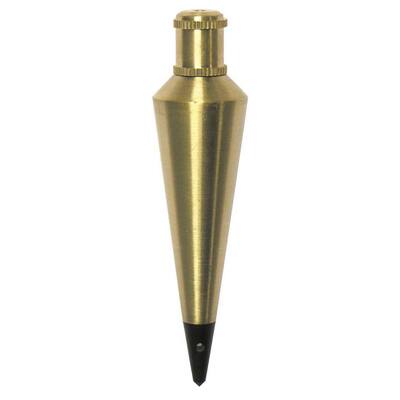

Not just for measuring perpendicularityīecause plumb bobs use gravity and were commonly used in the construction of walls, towers and churches, it may seem that it is only good for measuring perpendicularity. There are several huge collections of antique plumb bobs in the world. Plumb bobs do not age, unless they are broken. It’s funny, but true – these museum pieces would still work just fine today.

The metal construction allowed thousands of ancient plumb bobs to survive to this day. Pointy end was critical for the accuracy of measurements and hard metals retain their shape better. This gives the plumb bob the necessary weight, but at the same time keeps its surface hard. However, lead is a relatively soft metal, so antique plumb bobs are often bronze or brass with a lead core. ( Gaius Cornelius, Wikimedia(CC BY-SA 4.0) A heavy lead plumb bob stops swinging quicker, although in some cases plumb bobs were filled with a liquid – mercury, water or even molasses – to dampen the movement.Īn ancient Roman plumb bob. Plumb bobs had to be made from a heavy metal so that wind would move the plumb line too much. The name “plumb bob” refers to the material that this tool was made of in the past – the Latin plumbum means lead. Plumb bobs are used not only by builders, interior decorators, electricians, construction engineers and carpenters, but also by well diggers, foresters, astronomers, shipbuilders, artillerymen, mining engineers, scale makers and calibrators, pipeline layers, road builders, etc.

The plumb bob is one of the few tools that is (or was) used by people from so many different professions. As a result, plumb bobs were often ornamented, characterised by a beautiful curved shape, and were depicted in art and heraldry. For example, the book of Isaiah says, “I will make justice the measuring line and righteousness the plumb line.” Whether you are a believer or not, this shows the symbolism of the never-failing plumb line in Western culture. ( Andreas Praefcke, Wikimedia(CC BY 3.0)īecause of this objective and eternal accuracy, the plumb bob is mentioned several times in the Bible. The data provided here are personal opinions not contrasted.Old construction tools in art. The description is not a detailed exposition of the object. The object for sale is the one that corresponds to the photos. The tones of the colours in the photos are not equal to the tones of the real colours. Very interesting as a collector"s item and as a decorative element. Both the Measurements, as well as the Weight, are approximate. The Plumb bob shows wear typical of it"s age. The quality of the casting and the execution of the plumb bob is good. It has a very good and beautiful patina throughout the plumb bob. The plumb bob is in a good state of preservation, with many, but very minor knocks and scratches. The plumb bob was probably made in southern Europe. We have not found any distinctive mark or contrast, which could provide information about the place where it was made, the maker"s data, as well as other data. We think it comes from India, given its design and manufacture. This plumb bob is very curious, all iron including the nut, and with a very original tip. The nut is original from the plumb bob, made of iron, it is preserved intact and in very good condition. The thread is large in size and diameter, with a large thread and pitch. The body of the weight has a cylindrical and conical shape. Plumb bob with walnut for Construction of the First Half of the 19th century, with solid iron weight, 5,3 cm.


 0 kommentar(er)
0 kommentar(er)
